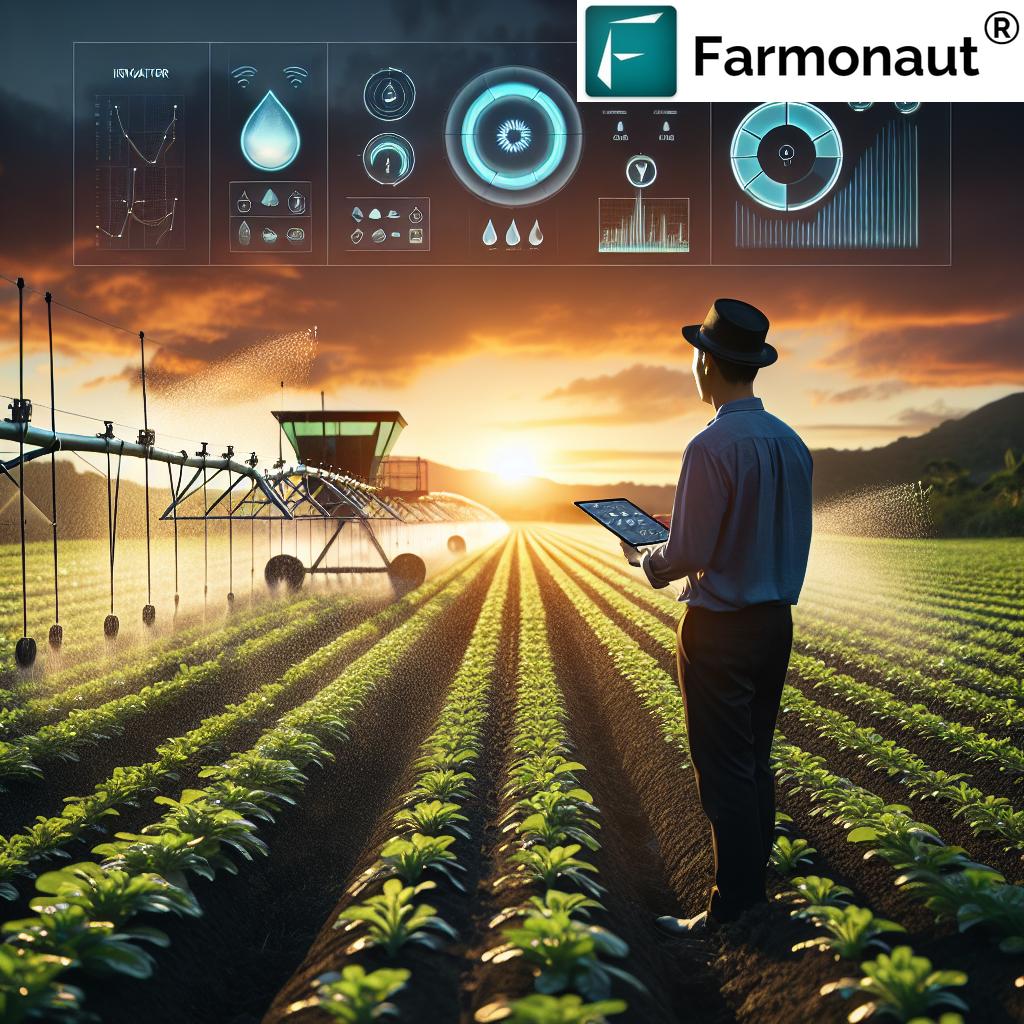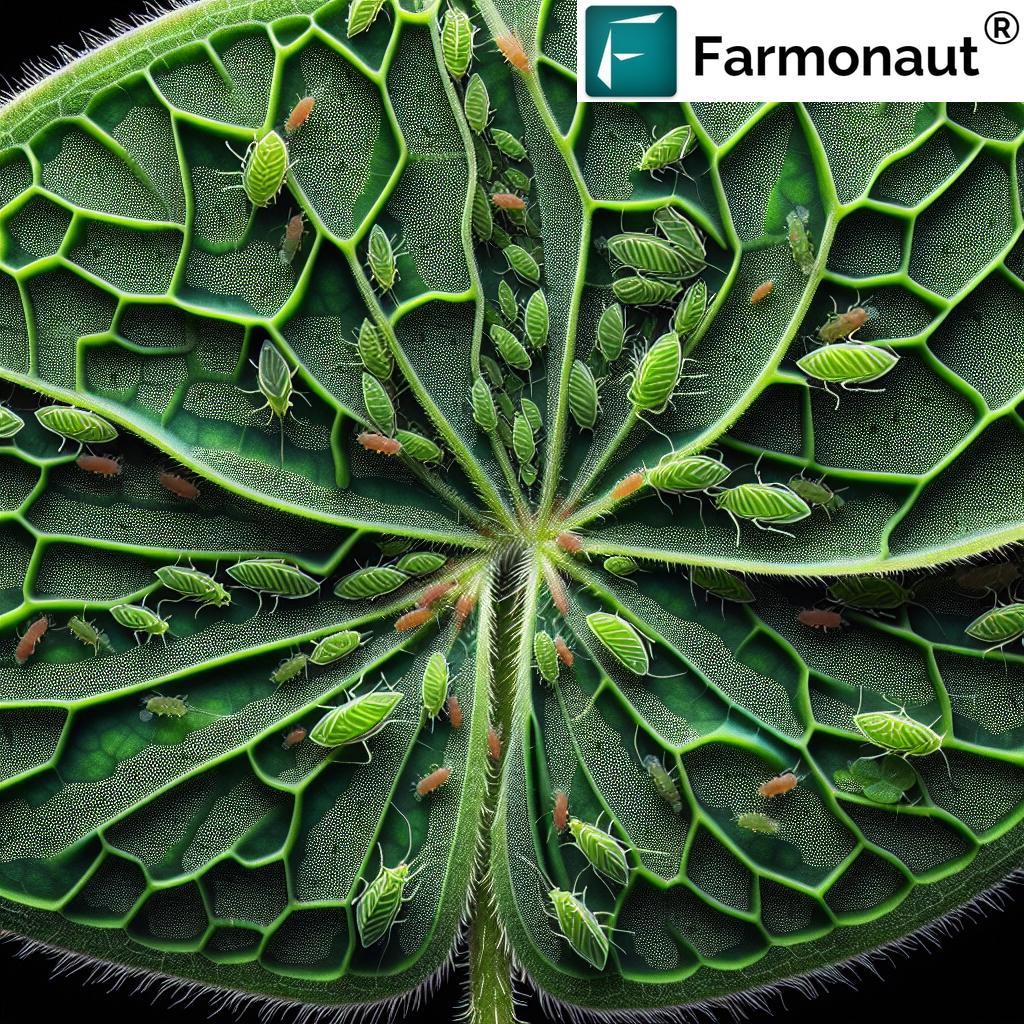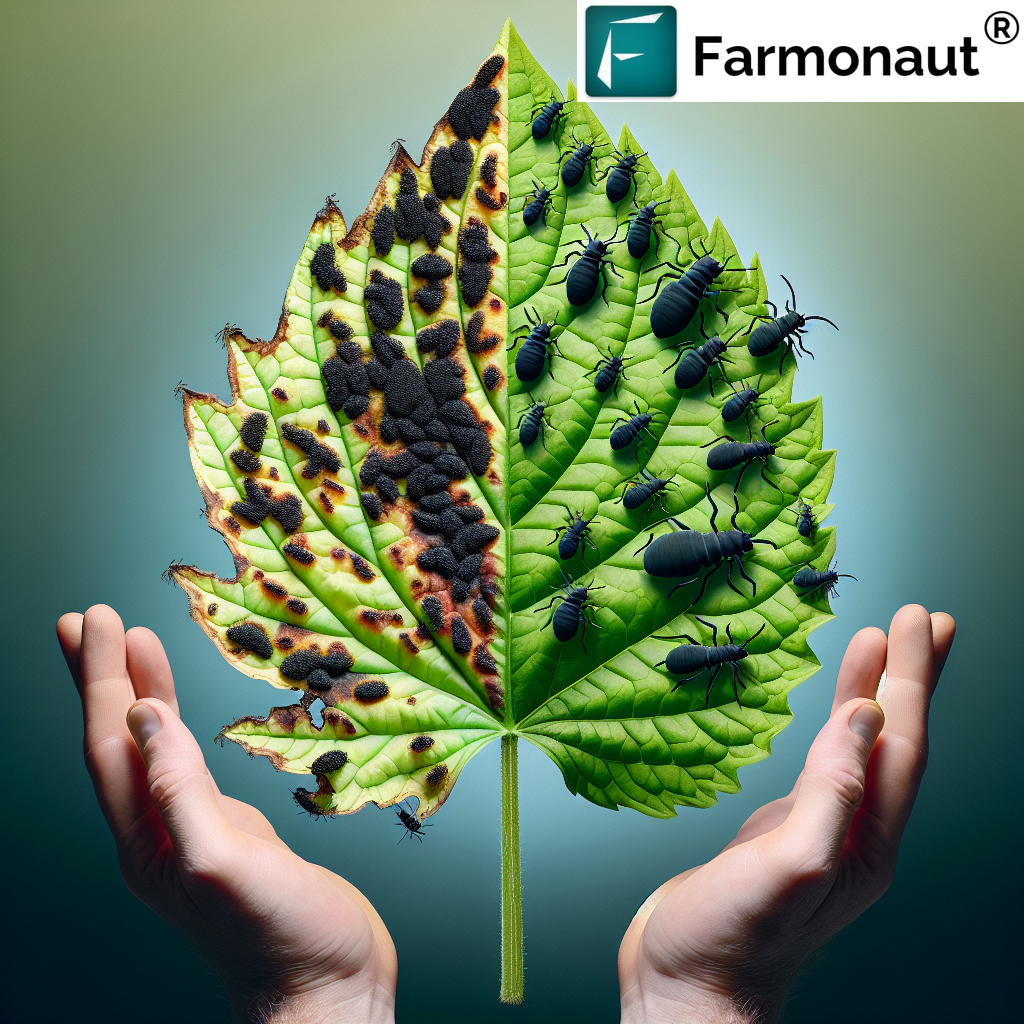IoT in Smart Farming: 7 Powerful Ways to Boost Efficiency
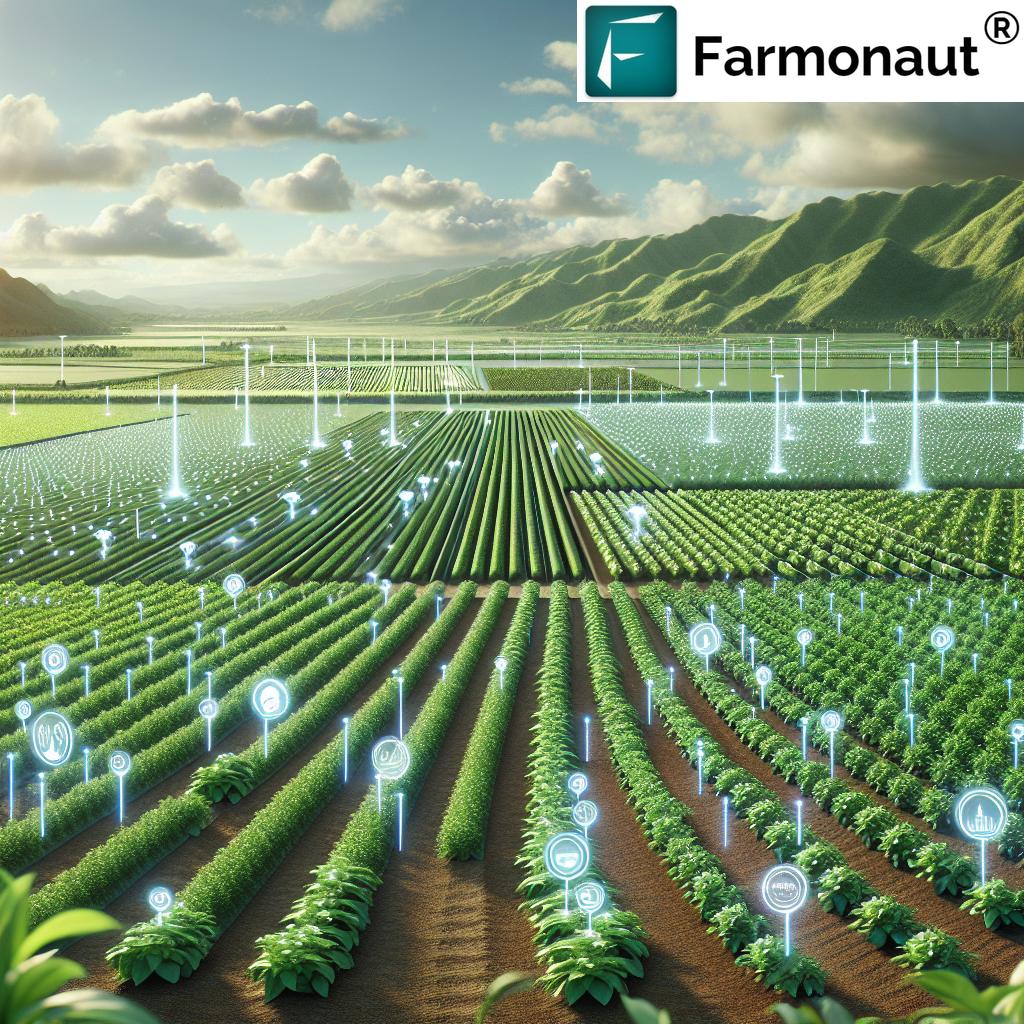
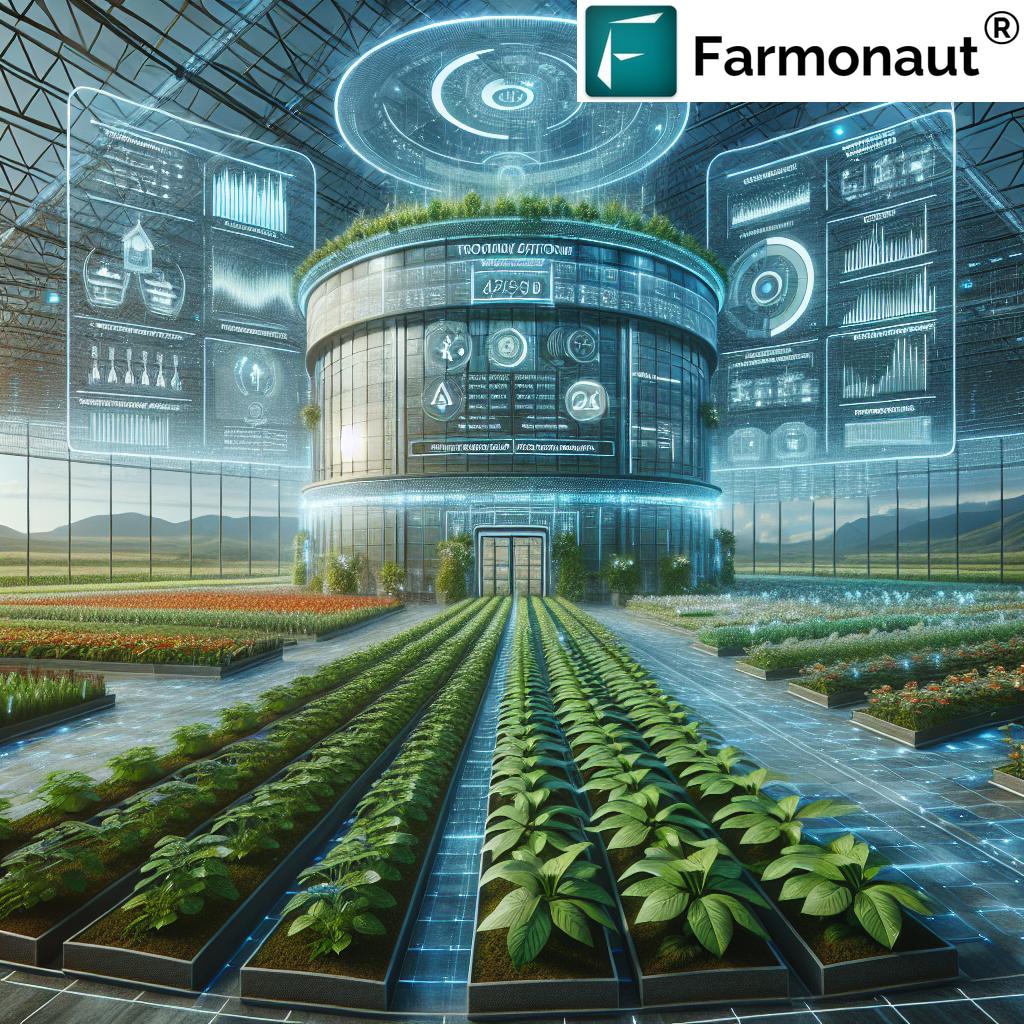
“Over 75% of smart farms use IoT sensors to monitor soil moisture, optimizing irrigation and reducing water waste.”
Table of Contents
- Introduction: The IoT Revolution in Agriculture
- 1. Precision Farming: Data-Driven Cultivation for Higher Yields
- 2. Smart Irrigation Systems: Optimizing Every Drop
- 3. Livestock Monitoring: Enhancing Animal Health and Farm Efficiency
- 4. Crop Health and Pest Monitoring: Early Detection, Higher Returns
- 5. Smart Greenhouses: Automated Environmental Control
- 6. Climate Condition Monitoring: Adapting to Nature, Season by Season
- 7. Supply Chain Traceability: Transparency from Field to Fork
- Bonus: Sustainable Farming Practices Powered by IoT
- Why Choose Farmonaut for Your Smart Farming Needs?
- Comparison Table: 7 Ways IoT Boosts Smart Farming Efficiency
- Challenges and Considerations in IoT-Enabled Agriculture
- FAQs: Your Smart Farming and IoT Questions Answered
- Conclusion: Transforming Agriculture for a Sustainable Future
Introduction: The IoT Revolution in Agriculture
The agricultural industry is undergoing a transformation, powered by the Internet of Things (IoT). By bringing together smart devices, actionable data, and real-time insights, IoT in agriculture is no longer just a futuristic idea—it’s the engine behind modern, efficient, and sustainable farming solutions. Today, farmers rely on networks of sensors, connected machines, and cloud-based platforms to monitor and manage virtually every aspect of their farm operations.
Why is this revolution so important? Because growing populations, climate challenges, and the need to optimize resources have put unprecedented pressure on food producers worldwide. We believe integrating precision farming technologies can address these challenges and deliver not only higher yields, but also healthier crops, improved animal welfare, enhanced supply chain transparency, and smarter resource management.
In this comprehensive guide, we’ll explore seven powerful ways IoT is boosting efficiency in smart farming—from precision agriculture and smart irrigation systems to livestock monitoring devices, automated greenhouse systems, and beyond.
“Precision agriculture with IoT can increase crop yields by up to 20% through real-time data-driven decisions.”
1. Precision Farming: Data-Driven Cultivation for Higher Yields
Focus Keyword: Precision Farming Technologies in IoT Agriculture
Precision farming represents the heart of smart farming solutions, combining IoT devices, data analytics, and real-time monitoring to fine-tune every step of the agricultural lifecycle.
How Precision Farming Works
By deploying sensors across the field—measuring soil moisture, temperature, nutrient levels, and more—farmers can collect invaluable information on the precise needs of their crops. With this data, we can apply water, fertilizers, and pesticides exactly where and when needed, minimizing waste and reducing the environmental impact.
- Soil sensors: Continuously monitor moisture, salinity, and nutrient levels.
- Weather stations: Track local weather patterns that affect irrigation and planting.
- Drones and satellites: Capture aerial imagery for assessing crop health and growth variability.
For instance, if moisture levels drop below a certain threshold, irrigation systems can be automatically triggered—ensuring efficient use of water resources.
Benefits of Precision Farming Technologies
- Optimized resource use—fertilizers, water, pesticides, and energy.
- Reduced input costs—less waste means more money saved.
- Higher crop yields and quality from tailored field interventions.
- Smaller environmental footprint.
- Real-time decision-making via actionable insights.
Farmonaut’s Satellite-Based Precision Farming
At Farmonaut, we elevate precision agriculture by leveraging multispectral satellite imagery and mobile/web apps. Our services cover NDVI crop health monitoring, soil moisture tracking, and AI-powered field advisory systems—all available through our intuitive platform. This approach allows even small and medium-scale farmers worldwide to benefit from affordable, scalable, and data-driven precision farming solutions.
2. Smart Irrigation Systems: Optimizing Every Drop
Focus Keyword: Smart Irrigation Systems for Farming Efficiency
With global water scarcity threatening agricultural sustainability, smart irrigation systems have become vital. These systems use IoT environmental sensors for farming—including soil moisture probes and weather data integrations—to monitor and automatically adjust irrigation schedules for maximum efficiency.
- Soil moisture sensors: Detect the real-time need for irrigation, preventing both over- and under-watering.
- Weather-connected controllers: Integrate local forecast data to proactively manage irrigation cycles.
- Automated valves and pumps: Instantly respond to environmental data, optimizing water allocation across fields.
By harnessing real-time environmental data, smart irrigation systems—like those managed using Farmonaut’s AI and satellite insights—ensure that every drop counts, supporting higher yields and sustainability without wasting precious resources.
Explore Farmonaut’s Large Scale Farm and Plantation Management Platform: Designed to monitor multiple fields or plantations using advanced satellite and IoT data—ideal for agribusinesses and cooperative management. This system enhances operational efficiency and resource management at scale.
3. Livestock Monitoring: Enhancing Animal Health and Farm Efficiency
Focus Keyword: Livestock Monitoring Devices and Practices
Smart farming is not just about crops. Livestock monitoring with IoT devices is revolutionizing animal health management and operational efficiency. Using wearable tags and smart collars, farmers can remotely monitor vital signs, track locations, assess behavior, and receive early alerts regarding illness, breeding cycles, or animals straying from the herd.
- Smart tags/collars: Capture real-time data on temperature, heart rate, movement, and stress signals.
- Behavioral analysis: IoT platforms use AI to interpret abnormal patterns indicating illness or stress, enabling prompt intervention.
- Automated data logging: Reduces manual labor and enhances traceability for breeding, vaccination, and health management.
This continuous monitoring enables early detection of health issues, reduces the risk of disease outbreaks, and significantly improves animal welfare.
Fleet & Resource Management for Livestock Operations
With Farmonaut’s Fleet Management tools, agribusinesses running extensive livestock operations can streamline vehicle, machinery, and team logistics. Real-time insights minimize fuel wastage, reduce unnecessary costs, ensure animal transport safety, and improve traceability—all key in today’s data-driven agriculture.
4. Crop Health and Pest Monitoring: Early Detection, Higher Returns
Focus Keyword: Crop Health Monitoring with IoT
Harvesting strong, healthy yields depends on the continuous monitoring of crop health and the ability to detect issues early. IoT in agriculture brings an unprecedented edge here: from ground-based environmental sensors to drones equipped with multi-spectrum cameras, we can now monitor plant growth, nutrient status, pest infestations, and disease symptoms at scale.
- Drones & satellite imaging: Analyze vast fields in minutes, identifying stress patterns and early signs of disease or pest attack.
- Ground-level sensors: Detect microclimate changes, leaf wetness, and temperature—factors favoring pest outbreaks.
- Automated alerts: Enable rapid, targeted response, reducing overall pesticide use and crop loss.
Farmonaut’s platform offers AI-based crop health monitoring using satellite images, combined with expert advisory and real-time alerts. Our goal is to give farmers the resources to optimize yields, reduce input wastage, and maximize productivity.
For large estate managers, our Crop, Plantation, and Forest Advisory Tool delivers region-specific, data-driven recommendations—helping improve resource utilization and maintain sustainability.
5. Smart Greenhouses: Automated Environmental Control
Focus Keyword: Automated Greenhouse Systems for Efficiency
In controlled environment agriculture, smart greenhouses use IoT sensors and automation to create ideal growth conditions for crops year-round, regardless of outdoor weather.
- Environmental monitoring: Track temperature, humidity, CO₂, and light intensity with sensor networks.
- Automated control systems: Adjust heating, cooling, irrigation, and ventilation based on real-time sensor data.
- Remote management: Farmers can manage their greenhouses from anywhere using cloud platforms and mobile apps.
This ensures optimal crop growth while minimizing energy costs and labor. For those seeking advanced digital tools, Farmonaut’s Platform integrates environmental and crop data with AI recommendations, taking greenhouse productivity to the next level.
6. Climate Condition Monitoring: Adapting to Nature, Season by Season
Focus Keyword: Environmental Sensors for Smart Farming
Farmers face an ever-changing climate. Utilizing IoT-enabled climate monitoring systems, we can collect data on key environmental factors: temperature, humidity, rainfall, solar radiation, wind speed, and more. These insights are crucial for forecasting yields, optimizing irrigation and planting schedules, and preventing losses from unpredictable weather patterns.
- Weather stations: Provide hyper-local data tailored to each field.
- Soil temperature & moisture loggers: Guide planting time and irrigation cycles.
- AI analysis: Matches climate trends to crop requirements for better planning.
By leveraging platforms like Farmonaut, we not only access historic and real-time climate data but also receive advisory on adapting farming practices for greater resilience and efficiency.
Access Farmonaut’s Satellite and Weather Data via API, enabling developers and agri-tech businesses to integrate intelligent environmental data into their own systems. For technical information, consult our API Developer Docs here.
7. Supply Chain Traceability: Transparency from Field to Fork
Focus Keyword: Agricultural Supply Chain Traceability
Modern consumers—and food regulators—demand to know the entire journey of produce, from seed to plate. IoT is key to enabling full supply chain traceability in agriculture. By attaching smart tags and sensors to batches of crops or livestock, every step is logged and can be audited in real time.
- Temperature and humidity tracking during storage and transport preserves quality.
- Geo-location and movement records help prevent fraud and ensure food safety.
- Blockchain integration—offered by Farmonaut’s Traceability Platform—adds verification and security to each transaction, building consumer trust and simplifying compliance.
Ultimately, agricultural supply chain traceability protects both producers and end consumers, reducing waste and adding value through verified transparency.
“Precision agriculture with IoT can increase crop yields by up to 20% through real-time data-driven decisions.”
Bonus: Sustainable Farming Practices Powered by IoT
Focus Keyword: Sustainable Farming Practices in IoT-Enabled Agriculture
Sustainability is at the core of future agriculture, and IoT helps us reach these goals by:
- Reducing the overuse of water, fertilizers, and pesticides via precise application.
- Monitoring soil health and promoting biodiversity for environmental balance.
- Providing tools for carbon footprint analysis, as with Farmonaut’s Carbon Footprinting Solution. This helps producers measure and actively reduce their environmental impact.
By connecting all these dots—resource optimization, traceability, carbon monitoring—IoT-driven agriculture makes large and small-scale operations more eco-friendly and future-ready.
Comparison Table: 7 Ways IoT Boosts Smart Farming Efficiency
| IoT Application | Estimated Efficiency Improvement (%) | Key Benefits | Sustainability Impact |
|---|---|---|---|
| Precision Farming | 20–30% | Optimized input use, higher yields, reduced labor | Less fertilizer/pesticide runoff, improved soil health |
| Smart Irrigation Systems | 25–35% | Water savings, automated control, lower costs | Reduced water waste, preserved local ecosystems |
| Livestock Monitoring Devices | 15–25% | Early disease detection, improved welfare, efficient breeding | Lower antibiotic use, improved animal health |
| Crop Health and Pest Monitoring | 15–25% | Early alerts, targeted response, higher yields | Reduced pesticide usage, minimized crop loss |
| Automated Greenhouse Systems | 20–30% | Consistent yields, lower energy & labor | Efficient resource use, lower greenhouse emissions |
| Climate Condition Monitoring | 10–20% | Adaptive management, better scheduling | Resilient crop planning, reduced input waste |
| Supply Chain Traceability | 15–20% | Transparency, quality control, reduced loss | Reduced spoilage, consumer trust |
Why Choose Farmonaut for Your Smart Farming Needs?
Farmonaut stands out as a leader in affordable, satellite-driven precision agriculture. Our mission is to make advanced technology accessible to every farmer through real-time, data-driven solutions. Here’s why thousands of users trust us for integrated IoT-enabled farm management:
- Comprehensive Platform: From crop health monitoring to fleet management, and blockchain-enabled traceability, Farmonaut covers every need.
- Real-Time Data and AI Advisory: Access actionable insights through the web/Android/iOS apps or APIs designed for developers.
- Cost-Effective: Satellite-based monitoring eliminates expensive on-ground hardware.
- Sustainability: Tools for carbon tracking and traceability help you boost both environmental responsibility and marketability.
- Scalability: Solutions for everyone—from individual farmers to large enterprise operations.
Check out our app platform and API integration options or contact us to learn how Farmonaut can help transform your operations with precision IoT agriculture.
Farmonaut Subscriptions
Get started today! Choose a subscription plan that fits your needs—whether you’re an individual farmer, plantation manager, or corporate agribusiness.
Challenges and Considerations in IoT-Enabled Agriculture
Integrating IoT technologies into farming—while powerful—does present real-world challenges:
- High initial costs: Sensors, connectivity, and software require upfront investment—though platforms like Farmonaut minimize this using satellite data rather than costly ground hardware.
- Data security concerns: As with any cloud or IoT system, robust protocols are necessary to keep farm data safe.
- Technical expertise: Farmers may need training to maximize returns from digital solutions.
- Interoperability: Ensuring that various devices, sensors, and software can work seamlessly together is key for widespread adoption.
Overcoming these challenges requires the combined efforts of technology providers, agricultural educators, and policymakers, with platforms like Farmonaut leading the way through intuitive, affordable, and accessible solutions for every type of user.
FAQs: Your Smart Farming and IoT Questions Answered
What is IoT in agriculture, and why is it important?
The Internet of Things (IoT) in agriculture connects traditional farming practices with digital technology by using smart devices to monitor, analyze, and manage crops, livestock, and supply chains. It’s important because it helps increase efficiency, productivity, sustainability, and profit for farmers.
How does precision farming help optimize input costs?
Precision farming technologies use sensor and satellite data to apply water, fertilizers, and pesticides only where and when crops actually need them. This reduces excess input use, lowers costs, and protects the environment.
What is the benefit of smart irrigation systems?
Smart irrigation systems automate water delivery based on real-time soil moisture and weather data, saving water, preventing crop loss from over- or under-irrigation, and cutting energy costs.
How can Farmonaut’s technology help my farm?
Farmonaut provides satellite-based real-time crop health monitoring, AI advisory, blockchain traceability, and more. Our technologies are cost-effective and scalable, making them ideal for both small and large-scale farmers seeking to optimize operations, reduce waste, and meet sustainability targets.
How do IoT and blockchain improve food safety?
By providing transparent, real-time tracking of produce and livestock from farm to table, these technologies reduce errors, fraud, and spoilage—improving food safety and consumer trust.
Can I access Farmonaut on my mobile device?
Yes! Farmonaut is available on Android, iOS, and via any web browser. Start monitoring your farm from anywhere, anytime.
Conclusion: Transforming Agriculture for a Sustainable Future
The IoT revolution in smart farming is more than a trend—it’s a necessity. By embracing real-time data, automated systems, advanced monitoring, and transparent supply chains, we can address global challenges like food security, climate adaptation, and increasing resource demands.
Whether it’s precision farming, crop health monitoring, smart irrigation systems, or embracing sustainable farming practices with digital tools, IoT is the backbone of tomorrow’s agriculture. Farmonaut is committed to making these innovative technologies accessible and affordable, helping us all move towards a smarter, more sustainable future in agriculture.
Are you ready to transform your farm? Try Farmonaut’s solutions today and join the global movement towards efficient, sustainable agriculture.





